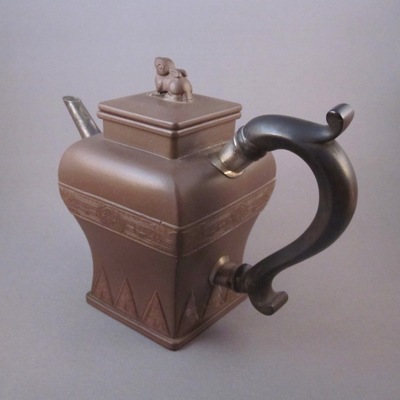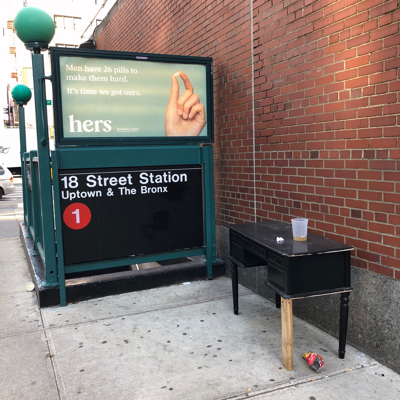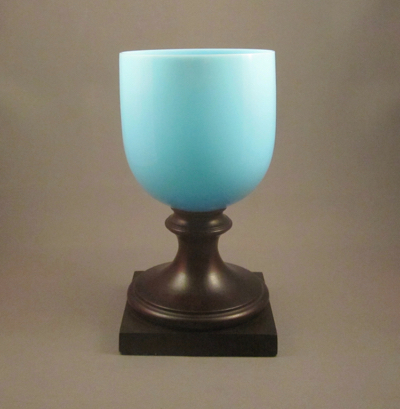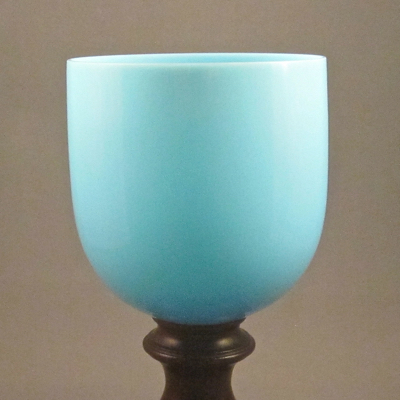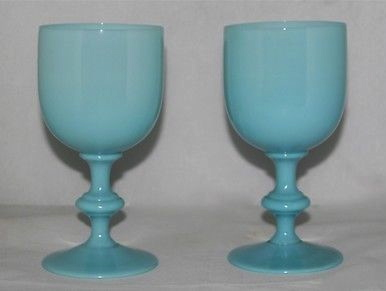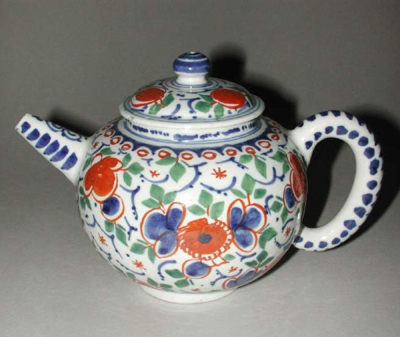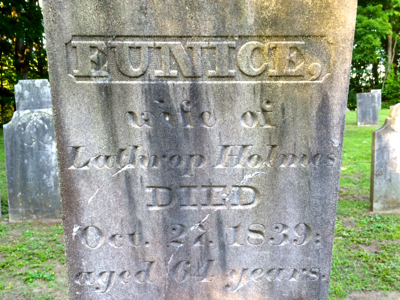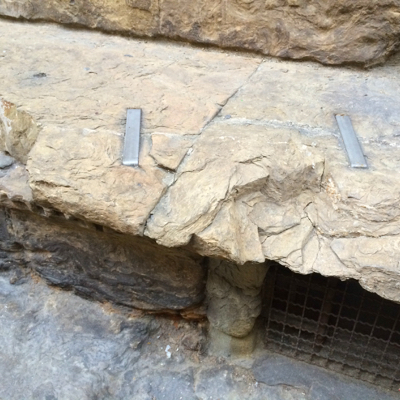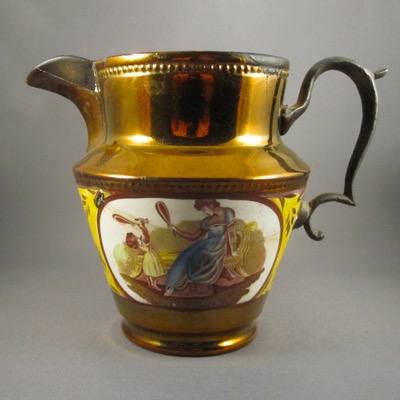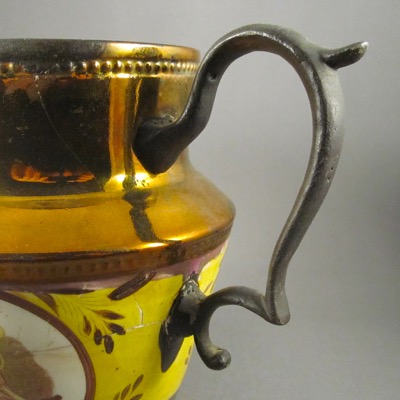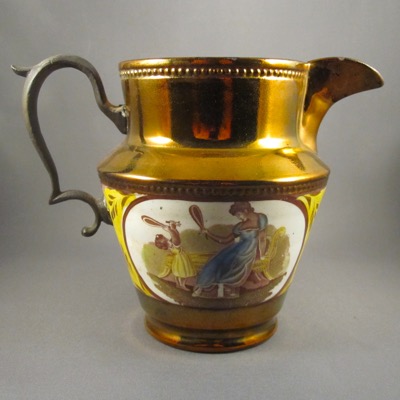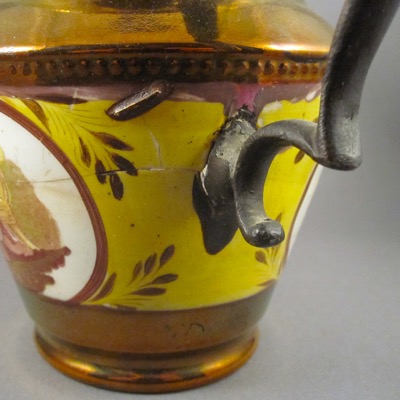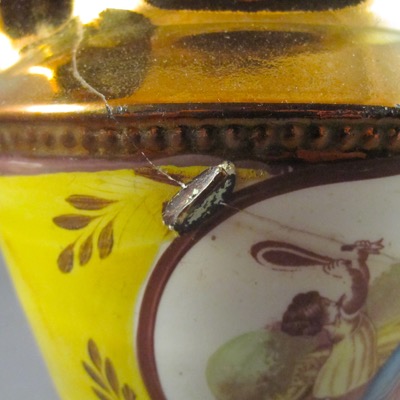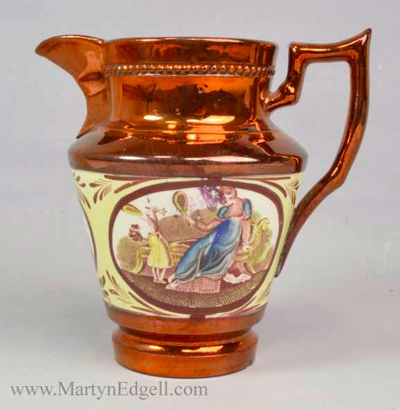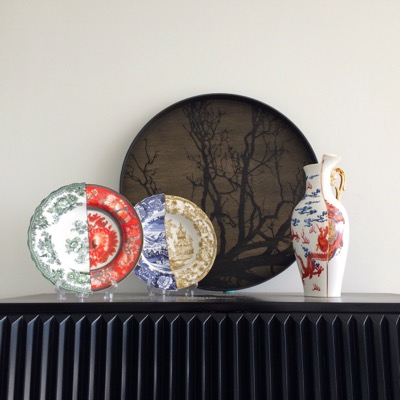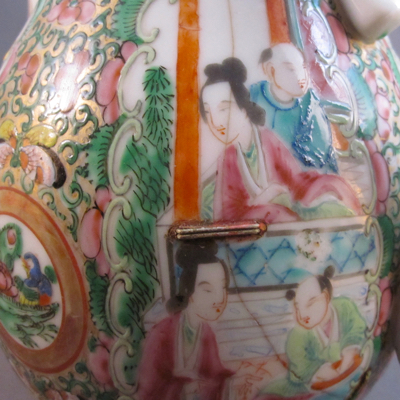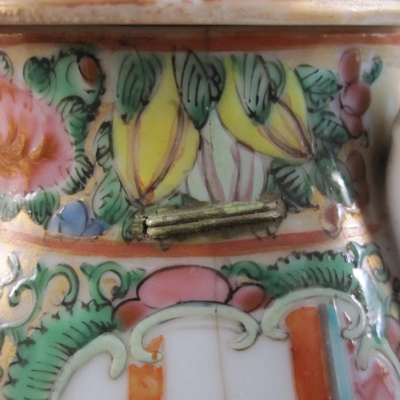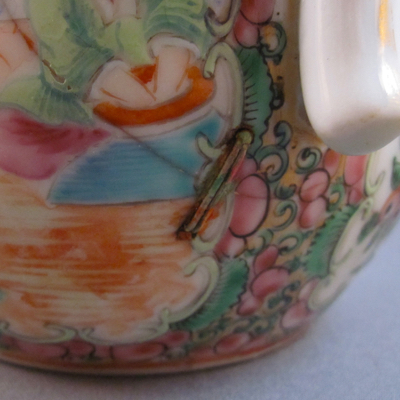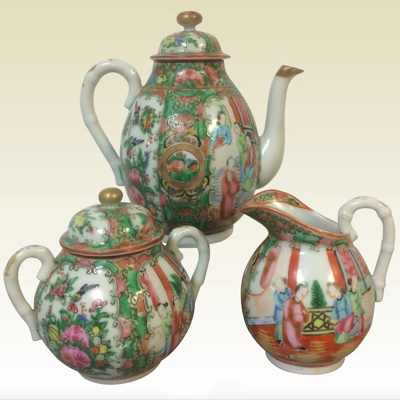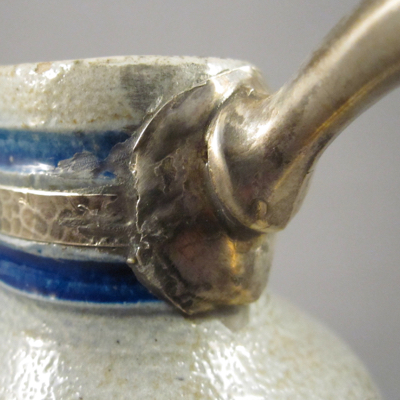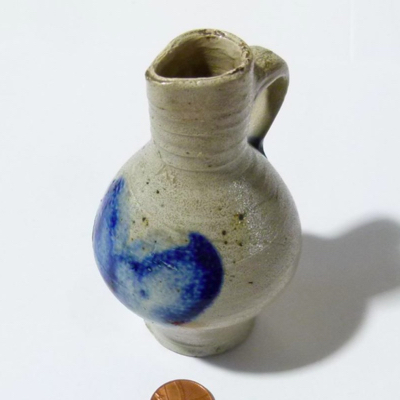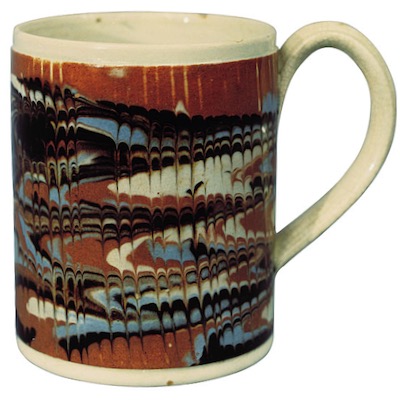This unusual quadrangular form, brown stoneware Yixing teapot was made in China in the middle of the 18th century. It has a rabbit finial and measures approximately 5 inches high and 7 inches from handle to spout.
At some point in its early life, the original loop handle broke off and was replaced by an expertly made carved wood replacement. I am not sure if the silver spout was added at the same time as the handle, but it is also an early replacement, most likely done by a fine jeweler or silversmith.
I particularly like the rabbit finial, which has a missing foot. When I was young I was given a rabbit’s foot key chain. I was quite fond of it until I realized, much to my horror, that it was an actual rabbit’s foot! I do hope this little guy’s foot didn’t end up dangling from the end of a tiny keychain.




